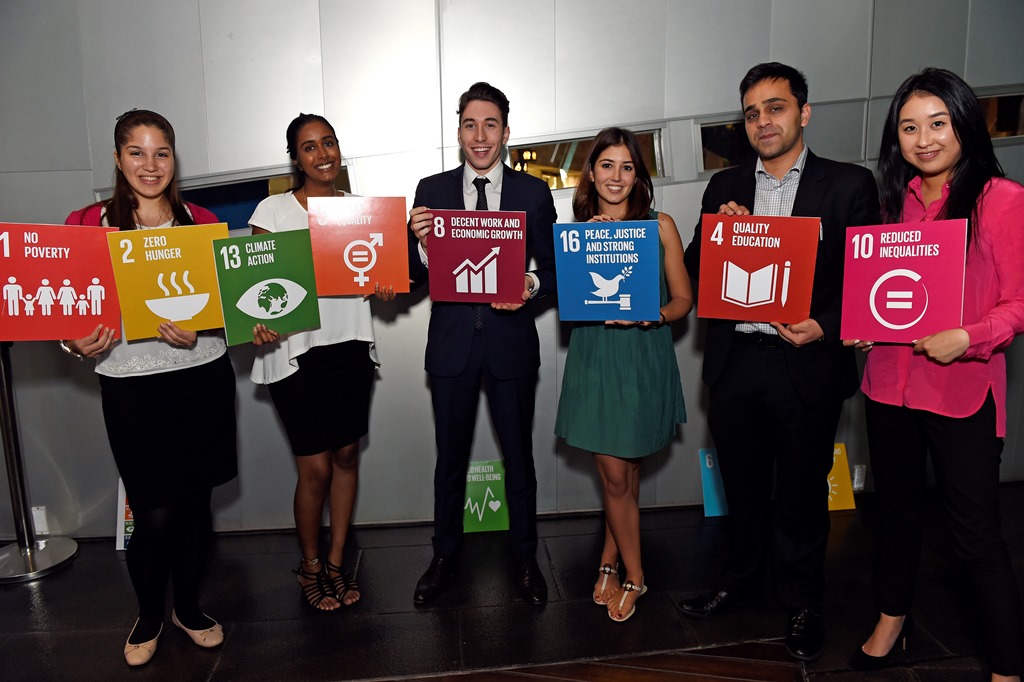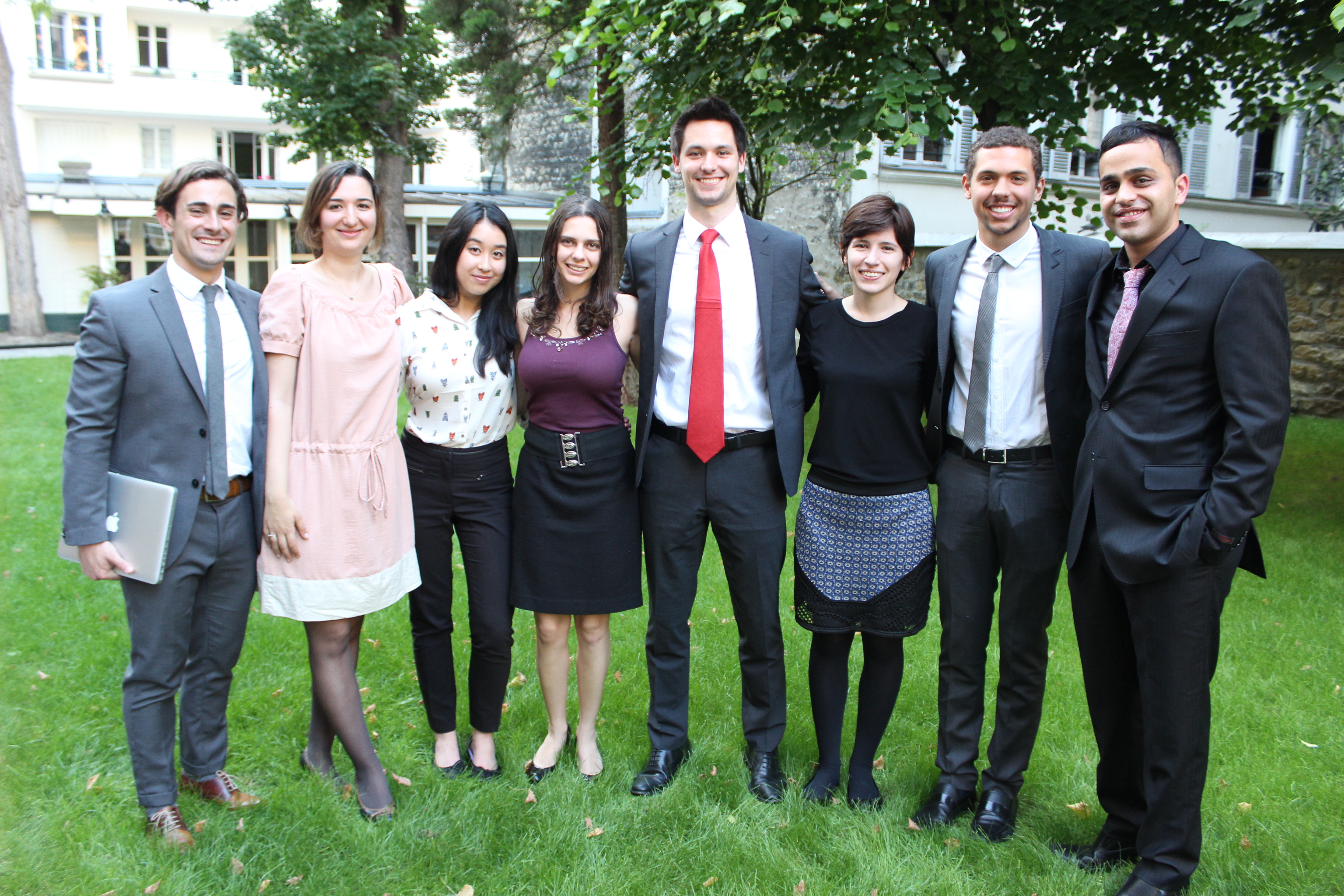.png)
By Brie Kingsley-Miller, Monash Sustainable Development Institute
This article was originally published on the Monash Sustainable Development Institute website.
Ten years ago, a student-led idea at Monash University sparked the creation of what would become one of the world’s largest youth networks dedicated to sustainable development. SDSN Youth, launched in Paris in 2015, now connects thousands of young people in over 100 countries to the United Nations Sustainable Development Goals (SDGs). It has empowered youth with training, mentorship, and leadership opportunities, influenced global policy, and created tangible impact worldwide.
While SDSN Youth’s global reach is widely celebrated, few know that its origins lie right here at Monash, where passion and perseverance from students and staff shaped a bold vision into reality.
In 2013, Monash University, under the leadership of Professor John Thwaites at the Monash Sustainable Development Institute (MSDI), took on the role of hosting the SDSN Regional Network for Australia, New Zealand and the Pacific (SDSN AusNZPac). This network is part of the UN Sustainable Development Solutions Network (SDSN), which was launched by then Secretary General of the United Nations Ban Ki-Moon and Professor Jeffrey Sachs of Columbia University to mobilise universities and knowledge institutions around the world to support the SDGs.
Meanwhile, on campus, a group of students in the Monash International Affairs Society (MIAS) were growing increasingly interested in how youth could have a stronger voice in sustainable development. Among them was Sam Loni, then an undergraduate Arts student passionate about social impact.
In late 2013, Sam invited John, who is a former Victorian Deputy Premier and an internationally recognised sustainability leader, to speak about the SDGs at a MIAS-hosted World Model UN event. The conversation between Sam, John and other students ignited the idea for a youth network under the SDSN umbrella.
Sam recalls,
Together with a handful of like-minded peers at Monash, we saw a gap: while many young people were deeply passionate about creating positive change in their communities, they often lacked a coordinated platform to translate that passion into meaningful action.
John Thwaites reflects,
We agreed that a strong youth voice was missing in global development discussions. Young people had the passion, but needed mentorship, structure and support to translate that into impact. That’s when the idea for SDSN Youth took shape.

MSDI, led by John and supported by Dr Tahl Kestin, Network Manager for SDSN AusNZPac, quickly saw the potential. “Universities are not just about academic solutions,” says Tahl. “Students are one of our biggest assets and we wanted to elevate their incredible passion to lead on sustainable development, even if the path wasn’t clear.”
Sam and fellow students drafted a proposal for a regional youth network within SDSN AusNZPac. With MSDI’s help, they organised a youth forum in Australia in May 2014, bringing together local youth leaders to discuss the SDGs.
The next challenge was pitching the idea on a global stage. With MSDI’s backing, Sam and other students travelled to New York to present to the SDSN Leadership Council, which was led by world-renowned economist, Professor Jeffrey Sachs, and consisted of former ministers, heads of state, United Nations officials and eminent business leaders and academics.
John remembers that meeting well:
There was some scepticism from established leaders. They weren’t sure a youth-led network could meaningfully contribute to SDSN’s ambitious global action agenda. But Sam managed to turn them around about the value young people could add.
Their efforts paid off. In June 2015, SDSN Youth was officially launched at an SDSN meeting in Paris, with Sam elected as its first Global Coordinator. Other Monash students also took on leadership roles in the emerging global network.
With support from visionary philanthropist Harold Mitchell, MSDI was able to hire Sam and provide him with mentorship, strategic guidance, and administrative backing in his Global SDSN Youth Coordinator role. Tahl recalls, “Supporting Sam was a real privilege and also a learning curve for us. We had to find ways to help a young leader navigate organisational bureaucracies, global diplomacy, and youth engagement simultaneously.”
Sam notes,
MSDI’s support was absolutely crucial. In the early days, MSDI provided resources, networks, and - through John and Tahl - incredible mentorship and guidance. The truth is, without MSDI and its leadership, SDSN Youth simply wouldn’t have happened. But equally importantly, over the years, MSDI has continued to champion SDSN Youth and amplify its impact.”
Alongside this institutional support, Harold Mitchell’s philanthropic backing also made a vital difference. Harold was deeply committed to bringing peace and prosperity to future generations in our region, and was a champion for empowering young people to drive sustainable development. “I think the future is in good hands,” he wrote in his column in The Age after meeting the SDSN Youth team. Harold passed away in 2024, but his support for SDSN Youth remains a lasting part of his legacy.

What made SDSN Youth stand out wasn’t just that it was run by young people, it was how it combined the energy and ideas of youth with the experience, networks, and structure of a global institution.
“That’s what was quite special,” John says. “We weren’t just handing the reins to students. We were trying to make something new work, a true intergenerational collaboration.”
That came with challenges. SDSN Youth had to fit within a broader organisation of high-profile academics and global leaders, navigating expectations and power dynamics. But the model worked.
Since SDSN Youth was established, other university networks for sustainable development have tried launching their own youth arm.
John adds,
SDSN Youth was one of the first to try it, and remains one of the biggest and most successful. I think we showed how it can be done well.
After graduating, Sam moved to New York to continue his role full time at the SDSN Secretariat, overseeing the growth of SDSN Youth, and the development of many of its global flagship programs, including:
Meanwhile, MSDI continued to support Monash student leaders, including Michelle Huang and Isabelle Zhu-Maguire, as SDSN AusNZPac Youth Coordinators. They hosted national workshops on the SDGs, coordinated youth input to Australia’s Voluntary National Review and Senate Inquiry on the SDGs, and produced the first ever Youth SDG Index Report. Ahead of COP28, SDSN Youth co-organised one of Australia’s first Local Conferences of Youth, ensuring young voices shaped the global climate agenda.
John highlights the significance:
This network hasn’t just advocated for change; it’s delivered real projects and built genuine leadership pathways for young people. The scale and quality of youth-led action is extraordinary.
Zhu-Maguire reflects,
I was inspired by the incredible work that happens at MSDI to measure progress on the SDGs, as measurement is one of the most important ways of fostering accountability. But I was also inspired by the young people at SDSN Youth who pushed for intersectional research, exposing how different groups experience progress differently. The mantra of ‘leave no one behind’ is essential – if anyone is left behind, progress is moot.
She adds:
These projects weren’t just about data or advocacy. They trained young people in skills for the future and showed us that we could not only take part in global systems, but change them.
One of her proudest moments was sharing the Youth SDG Index findings at a UNFCCC COP28 conference.
It taught me tenacity, patience, and courage, but also shaped the trajectory of my academic career. Those experiences now form the foundation of my PhD.”
Sam stresses the importance of empowering young people as leaders, not just beneficiaries.
"Half the world’s population is under 30,” he says. “Student-led initiatives are essential because they can harness the creativity, energy, and local insight of these young people – who are often closest to the challenges. They empower students to move from theory to practice, turning ideas from the classroom into real-world impact, and indeed that is what we aimed with SDSN Youth.”
John agrees,
SDSN Youth shows what happens when universities give students room to lead and learn. It’s messy, imperfect, but incredibly powerful. We need to keep creating those opportunities.
What Monash did was unique. I am not aware of any other university in the world that helped launch a thriving youth movement for sustainable development. It's a testament to Monash's dedication to nurturing student leadership and its innovative spirit.
Monash’s involvement with SDSN Youth, including supporting Sam Loni and other student leaders, shows the ripple effect that student-led initiatives can have. From a conversation at Clayton to a global platform, the network now engages thousands of young people worldwide, demonstrating how sustained guidance and encouragement can empower students who might not otherwise have the opportunity to lead.
Sam reflects,
If the world is serious about sustainable development, we need to put young people at the centre, and not just as beneficiaries but as equal partners and leaders.”
The story is one of vision, persistence and collaboration across generations.
As we celebrate this milestone, we are reminded that investing in young people is not just about education, it’s about giving them the tools, space and respect to shape our shared future. SDSN Youth’s success shows what’s possible when that happens.